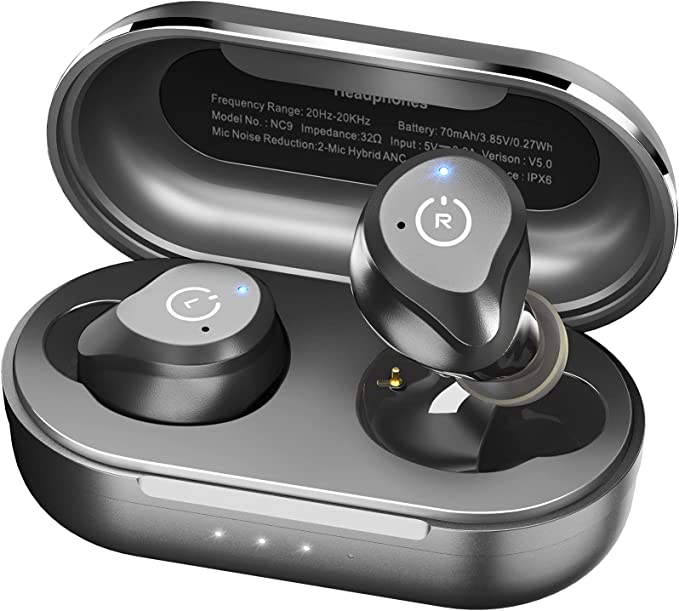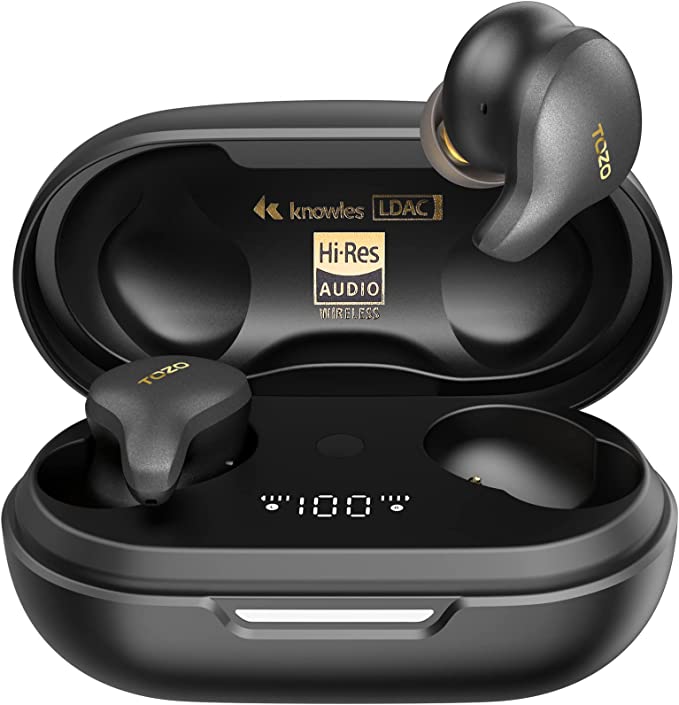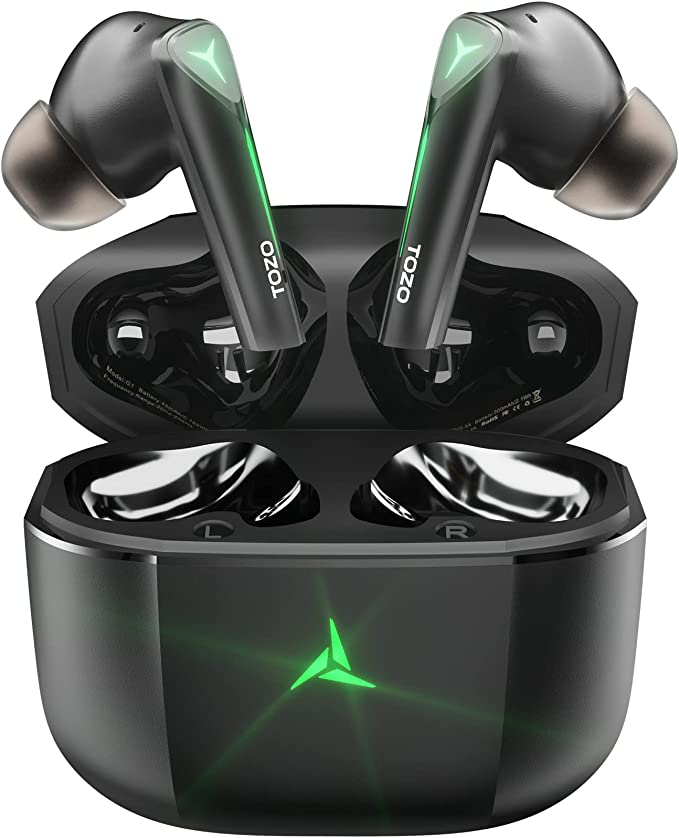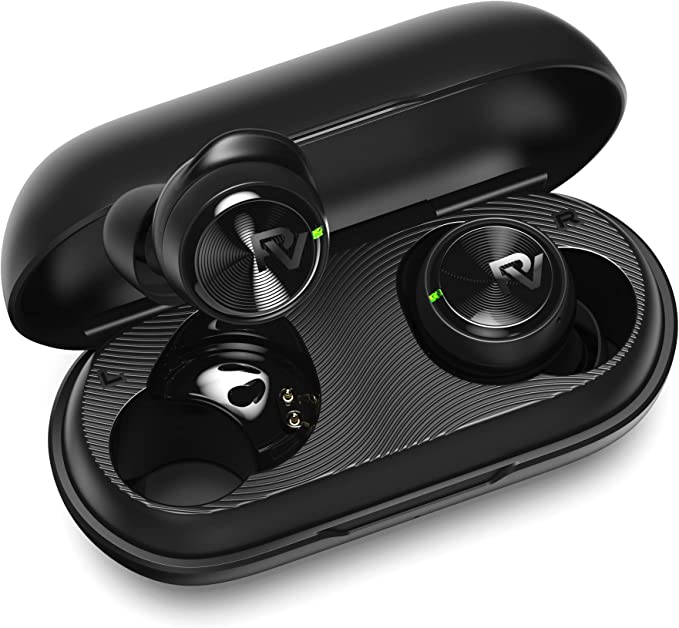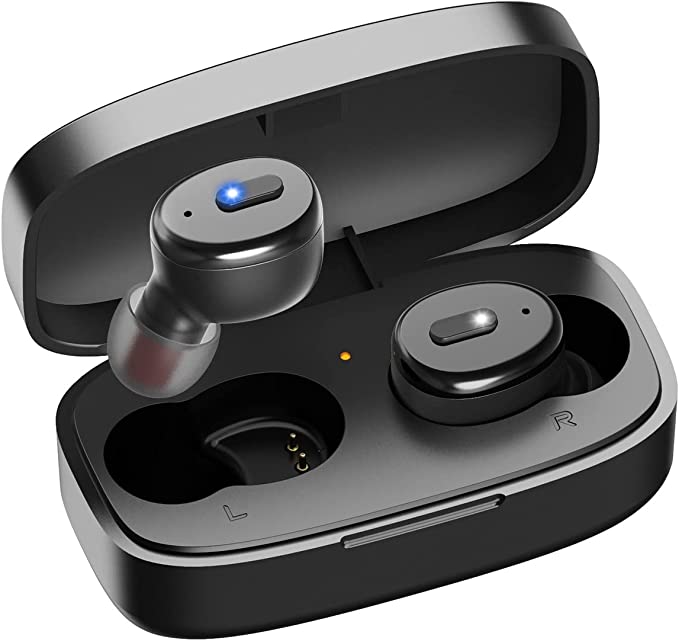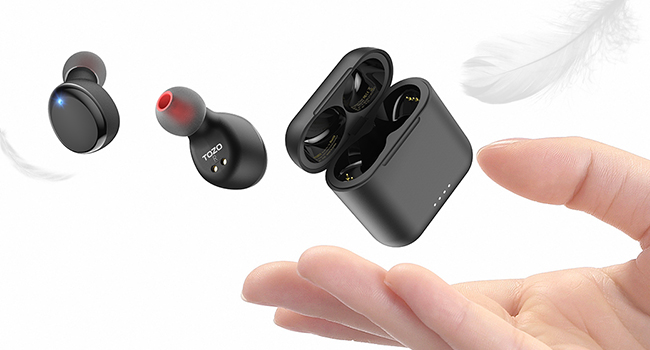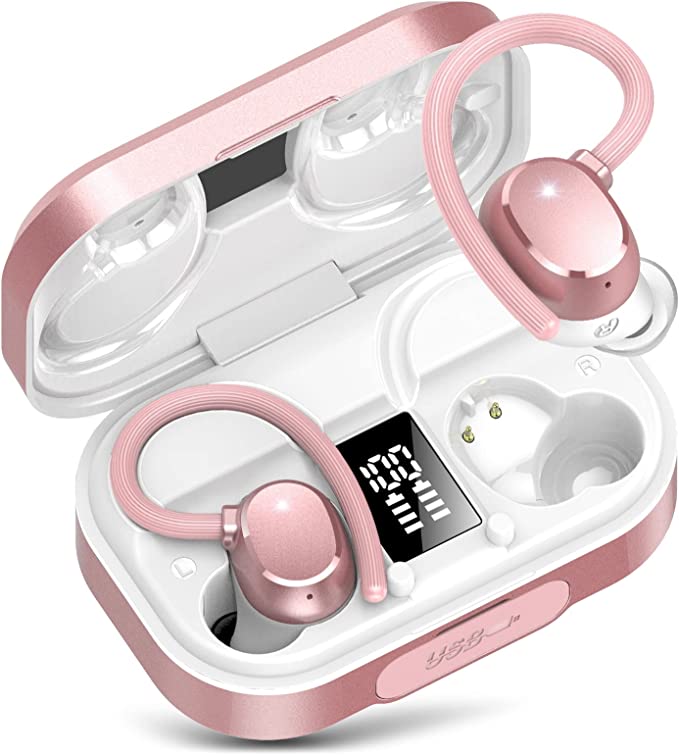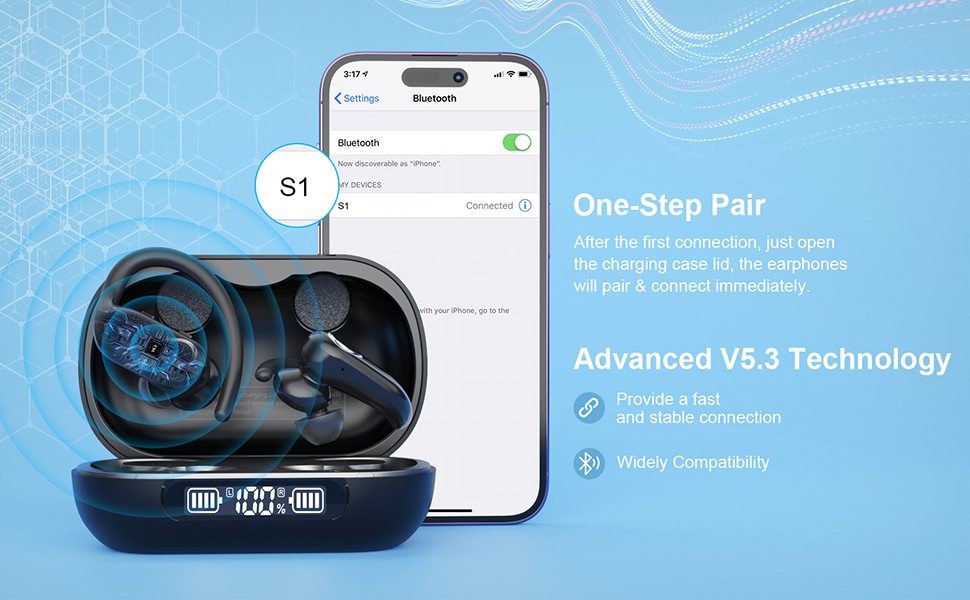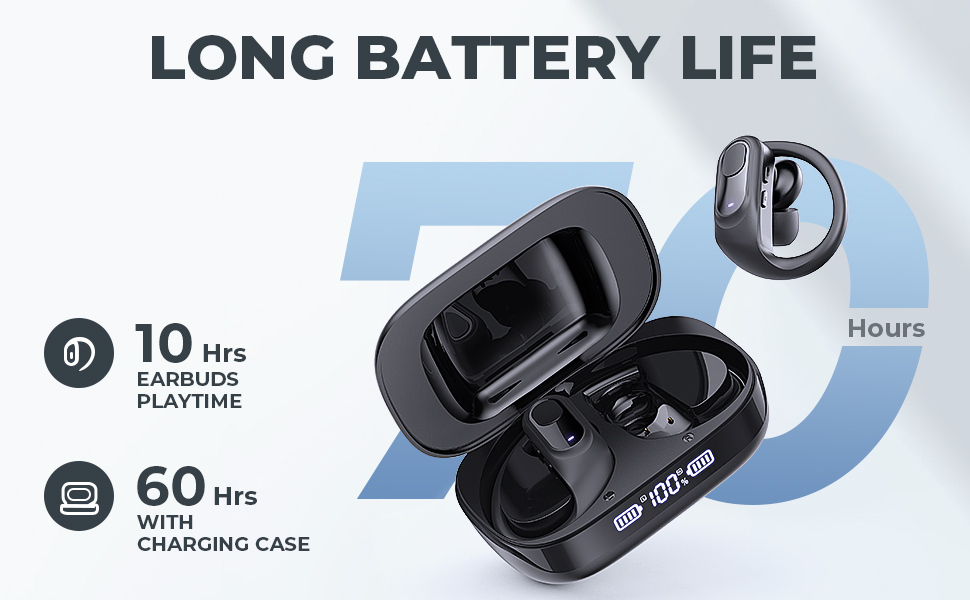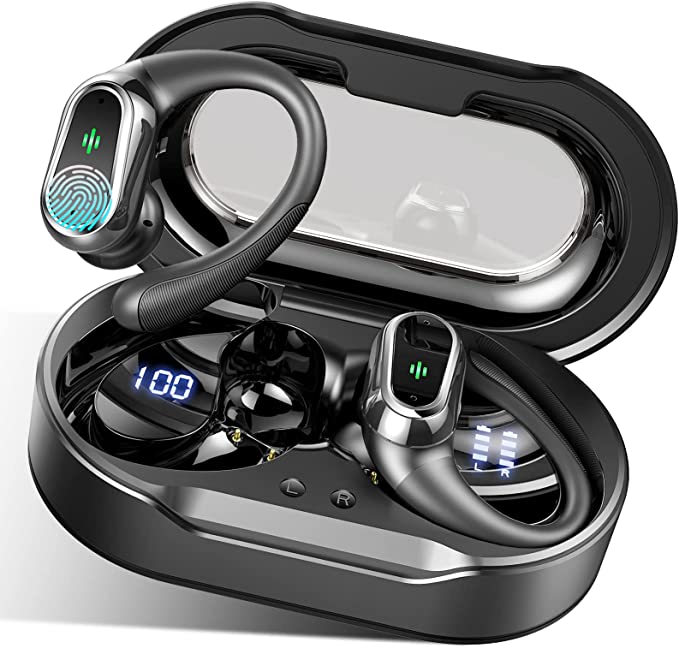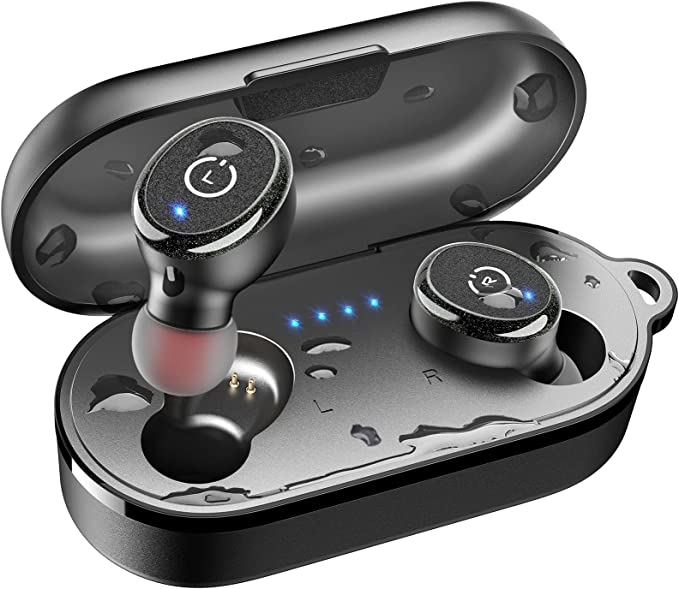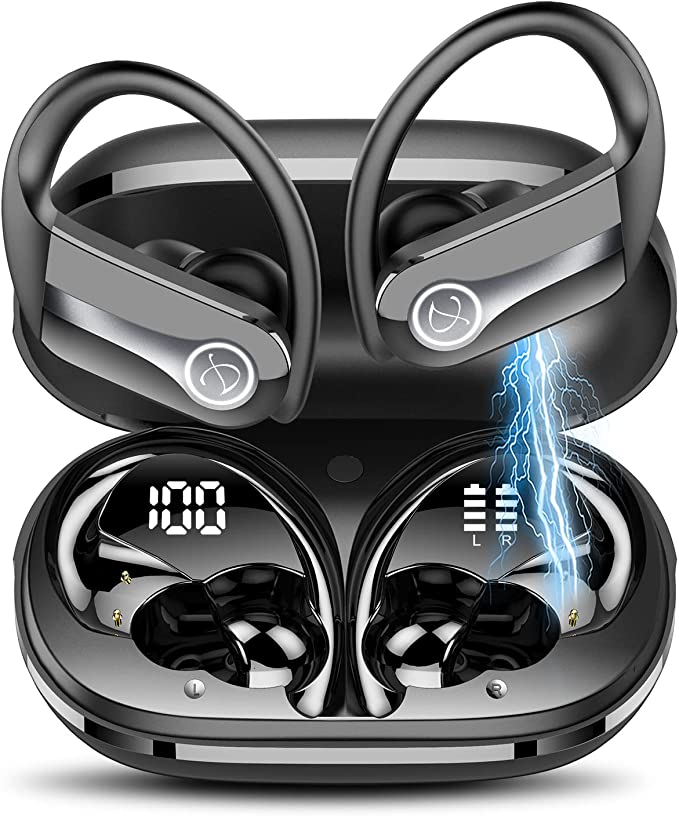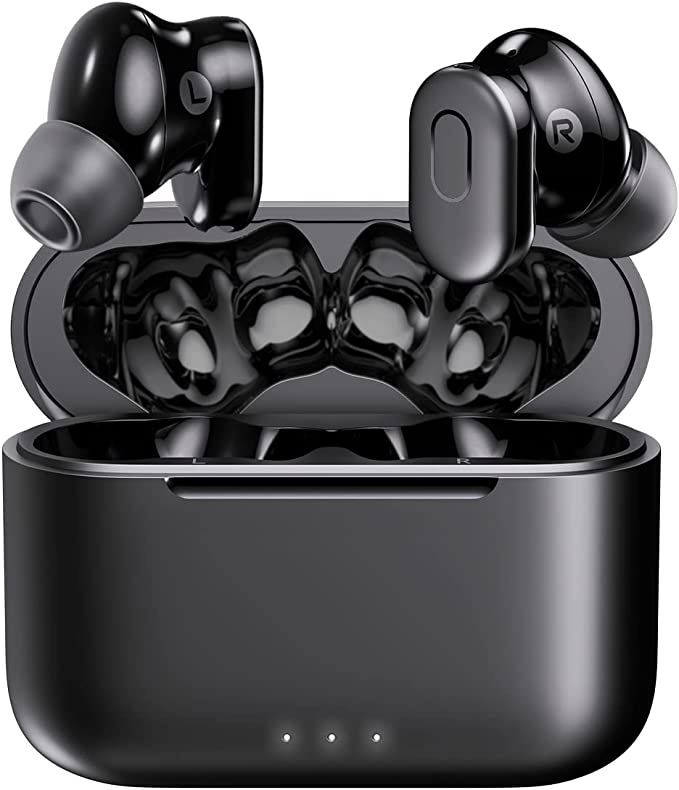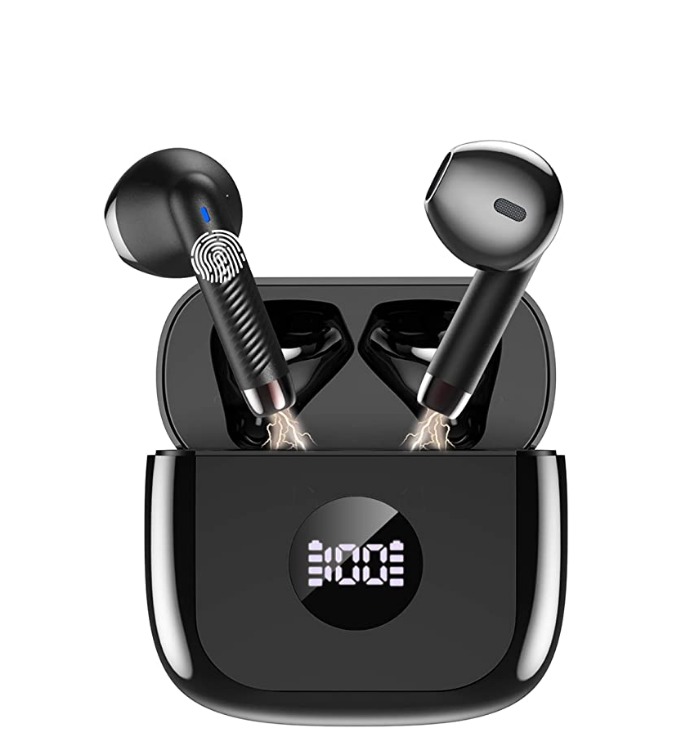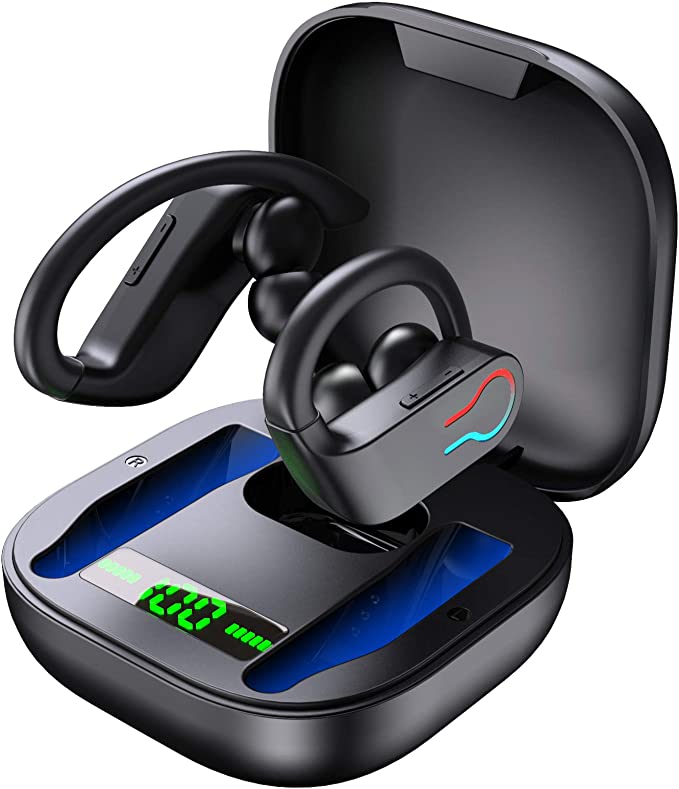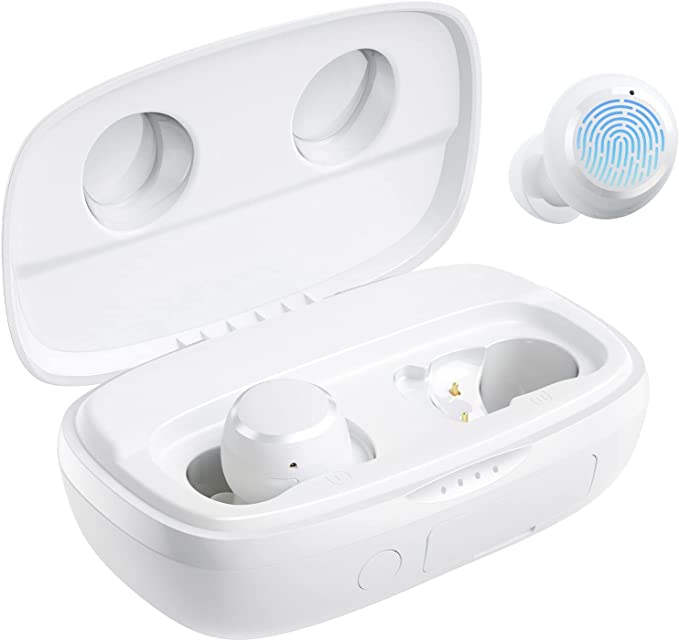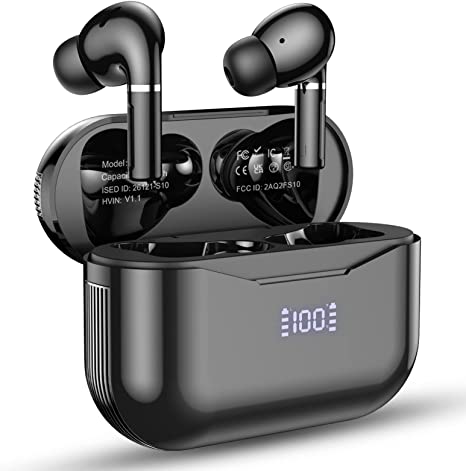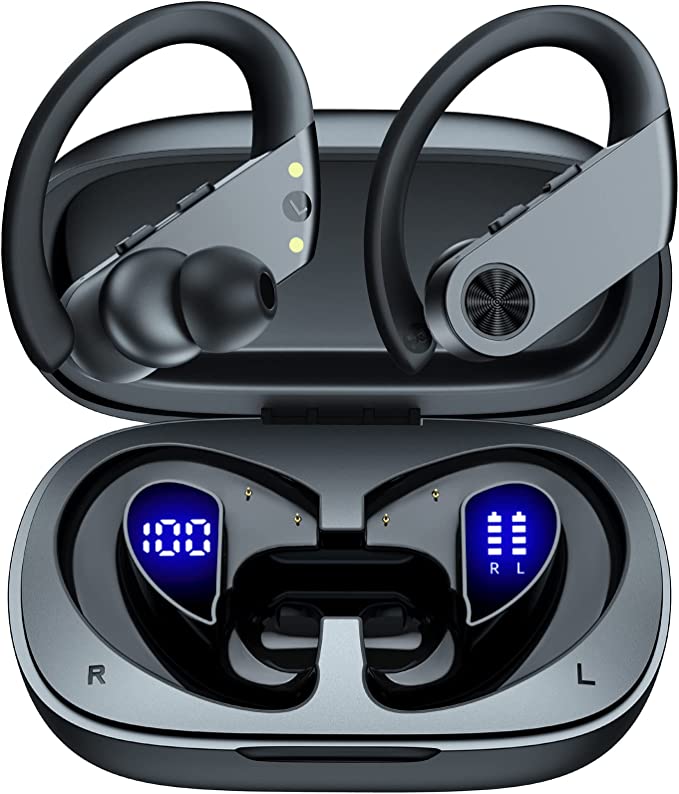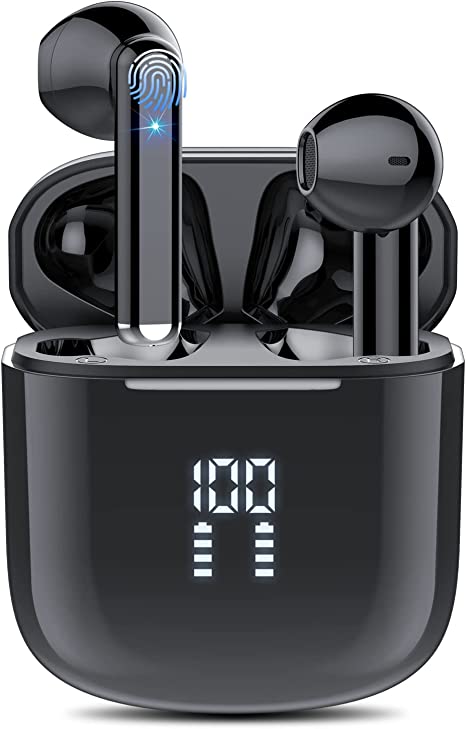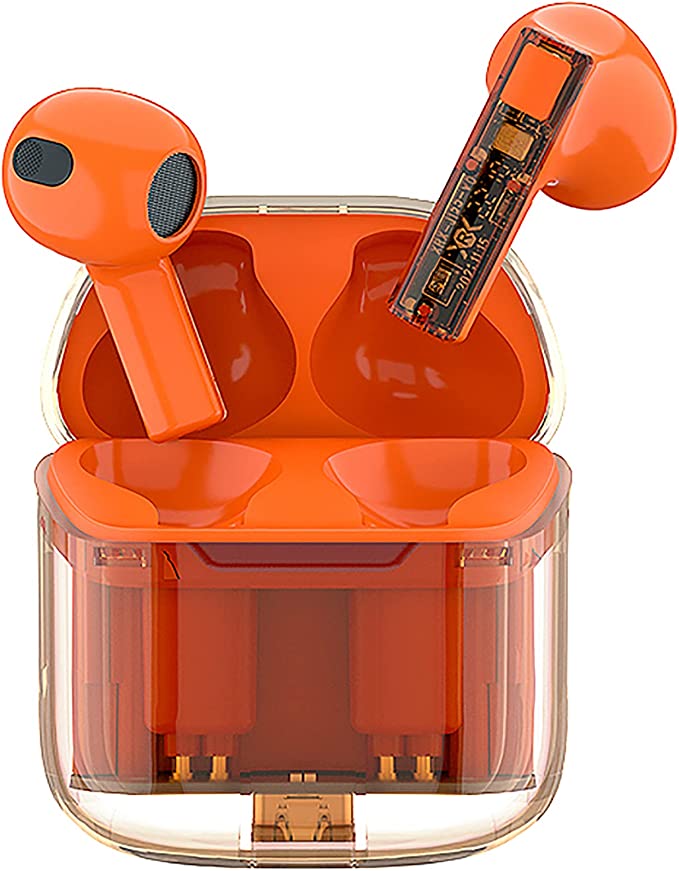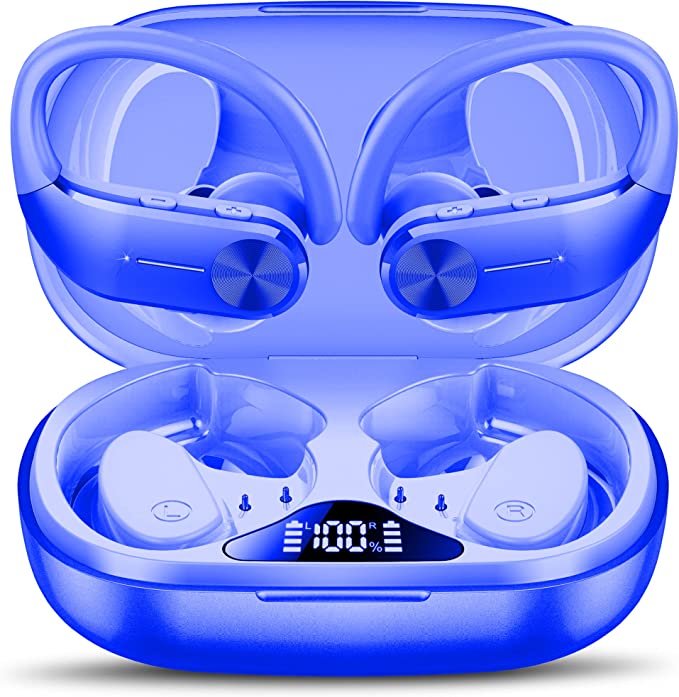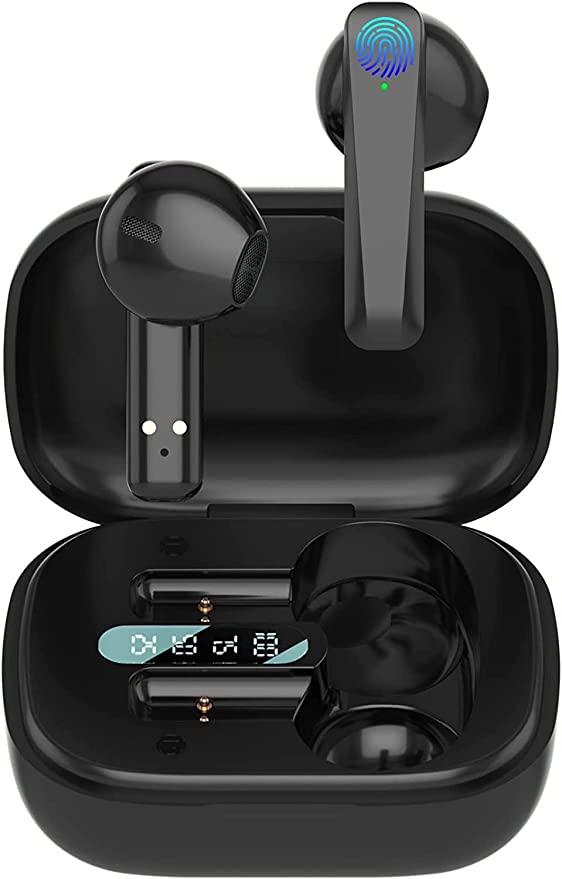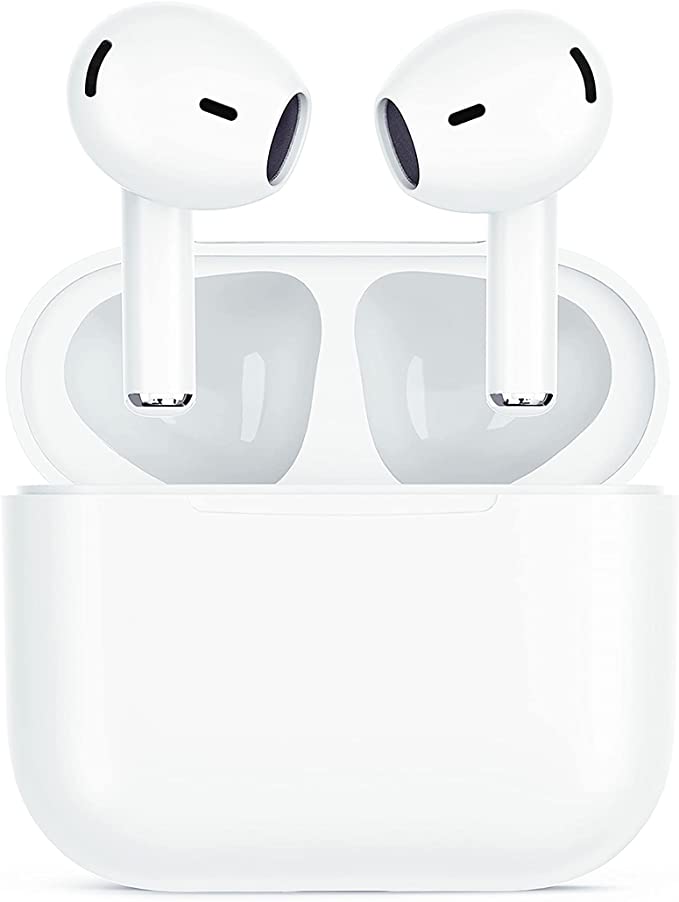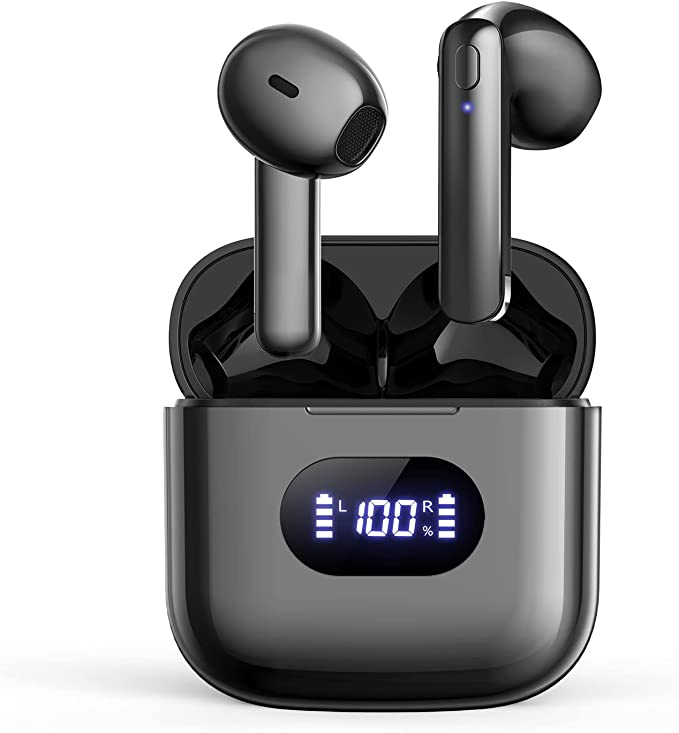TOZO T6 True Wireless Earbuds: Immersive Sound & Unbreakable Connection
Update on March 20, 2025, 6:36 a.m.
Imagine this: You’re finally ready to hit the gym, pumped for your workout, and your favorite playlist is cued up. You pop in your wireless earbuds…and the sound is thin, tinny, and constantly cutting out. Or worse, a little sweat, and they’re dead. We’ve all been there. The promise of wireless freedom often clashes with the reality of subpar sound, unreliable connections, and questionable durability. But what if there were earbuds engineered not just for convenience, but for a genuinely good listening experience, backed by solid science? Let’s dive into the TOZO T6 and explore the technology that makes it tick.

Sound Quality - Beyond the Hype
Before we even talk about specific earbuds, let’s talk about sound. Sound is, fundamentally, vibration. When an object vibrates, it creates pressure waves in the surrounding air. These waves travel to our ears, where they’re converted into electrical signals that our brains interpret as sound. The frequency of these waves – how many times they vibrate per second, measured in Hertz (Hz) – determines the pitch of the sound. Low frequencies correspond to bass, while high frequencies correspond to treble. The amplitude of the waves – the size of the vibrations – determines the loudness.
Our ears are remarkably sensitive instruments, but they have limitations. The average human can hear frequencies ranging from about 20 Hz to 20,000 Hz, although this range shrinks with age. But simply hearing a sound doesn’t mean it sounds good. When we talk about “good” sound quality in earbuds, we’re usually referring to several factors:
- Frequency Response: How accurately the earbuds reproduce sounds across the audible spectrum. Ideally, we want a relatively “flat” response, meaning that no particular frequency range is overly emphasized or suppressed.
- Distortion: Unwanted noise or changes to the original sound signal. Low distortion is crucial for clear, accurate audio.
So, how does the TOZO T6 tackle these challenges? The T6 utilizes what TOZO calls “OrigX Acoustic” technology. While the exact technical specifications of OrigX are proprietary, the goal is clear: to deliver a balanced and powerful sound profile. This likely involves careful selection of the driver (the component that actually produces the sound), the acoustic chamber design, and digital signal processing (DSP).
The TOZO T6 uses dynamic drivers, the most common type of driver in earbuds. Dynamic drivers work like miniature loudspeakers. A small diaphragm is attached to a coil of wire, which sits within a magnetic field. When an electrical current (the audio signal) passes through the coil, it creates a magnetic force that moves the diaphragm back and forth, producing sound waves. Dynamic drivers are known for their ability to produce strong bass, which aligns with user reports of the T6’s “punchy” low-end. As one user, Xmetal, described it, the T6’s bass is “clean” and doesn’t “bleed into the mids,” preventing the “muddy” sound that plagues many budget earbuds.

The Wireless Connection - Bluetooth Demystified
Wireless earbuds rely on Bluetooth, a short-range wireless communication technology. But Bluetooth isn’t a single, unchanging entity; it has evolved over time. The TOZO T6 boasts Bluetooth 5.3, the latest iteration, and this is a significant advantage.
Think of Bluetooth versions like lanes on a highway. Older versions, like Bluetooth 4.2, are like two-lane roads – functional, but prone to congestion. Bluetooth 5.3 is like a superhighway:
- Faster Speed: Bluetooth 5.3 can transmit data up to twice as fast as Bluetooth 4.2. This increased speed is crucial for high-quality audio streaming, reducing the need for aggressive compression that can degrade sound quality.
- Lower Latency: Latency refers to the delay between when a sound is sent and when you hear it. High latency can be incredibly frustrating when watching videos or playing games, causing the audio to be out of sync with the visuals. Bluetooth 5.3 significantly reduces latency, making for a more seamless experience. While there will always be some latency with any wireless connection, Bluetooth 5.3 minimizes it to the point where it’s often imperceptible.
- Improved Stability: Bluetooth 5.3 includes features that make the connection more robust and less prone to interference from other wireless devices. This means fewer dropouts and a more reliable listening experience, even in crowded environments.
- Greater Energy Effciency: Bluetooth 5.3 is designed to consume lower power.
Now, let’s talk about codecs. A codec is essentially a language that your phone and earbuds use to communicate. When you play music on your phone, it’s typically stored in a compressed format (like MP3 or AAC). The codec’s job is to encode this compressed audio for transmission over Bluetooth and then decode it on the other end for playback.
The TOZO T6 likely supports two common codecs: SBC (Subband Coding) and AAC (Advanced Audio Coding). SBC is the standard, mandatory Bluetooth codec, and it’s supported by virtually all Bluetooth devices. AAC is a more advanced codec that generally offers better sound quality than SBC, especially at lower bitrates. AAC is widely supported by Apple devices. While the T6 doesn’t support higher-end codecs like aptX, which are often found in more expensive earbuds, SBC and AAC provide a good balance of sound quality and compatibility for most users.

Waterproofing - More Than Just a Rating
We’ve all seen the “waterproof” claim on various electronics, but what does it really mean? The TOZO T6 carries an IPX8 rating. Let’s break that down. “IP” stands for “Ingress Protection,” a standard developed by the International Electrotechnical Commission (IEC). The “X” in IPX8 means that the device hasn’t been formally tested for dust resistance (which isn’t typically a major concern for earbuds). The “8” is the crucial part: it indicates the level of protection against water.
Here’s where it gets a bit nuanced. Unlike lower IP ratings (like IPX4, which protects against splashes), IPX8 doesn’t specify a fixed depth and time. Instead, it means that the device is protected against immersion in water beyond 1 meter, with the exact depth and duration specified by the manufacturer. In the case of the TOZO T6, the stated conditions are that it can withstand immersion. This means you can confidently wear them during intense workouts, in the rain, or even in the shower without fear of water damage.
But how does this waterproofing work? It’s a combination of clever design and material science. The earbud housings are likely sealed with tight-fitting gaskets and possibly adhesive to prevent water from entering. Furthermore, a nano-coating is often applied to the internal components. These coatings, typically made of hydrophobic (water-repelling) polymers, are incredibly thin – just nanometers thick – but they provide an extra layer of protection against moisture. Think of it like a microscopic raincoat for the electronics.
Comfort and Fit - The Ergonomics of Sound
Even the best-sounding earbuds are useless if they’re uncomfortable or constantly falling out. The shape of the human ear is incredibly complex and varies significantly from person to person. That’s why a one-size-fits-all approach to earbud design rarely works.
The TOZO T6 addresses this challenge by including six different sizes of ear tips (XS, S, M, L, XL, XXL). This wide range of options allows most users to find a tip that creates a secure and comfortable seal in their ear canal. This seal is crucial not only for comfort and stability but also for sound quality. A good seal blocks out external noise, allowing you to hear your music more clearly and at lower volumes (which is better for your hearing). It also improves bass response, as bass frequencies are more easily lost if the seal isn’t tight.

Battery Life and Charging
The TOZO T6 is powered by lithium-ion batteries, the same type of battery found in most smartphones and laptops. Lithium-ion batteries are popular because they’re relatively lightweight, have a high energy density (meaning they can store a lot of energy for their size), and have a long cycle life (meaning they can be recharged many times before their performance degrades).
The T6 earbuds offer over 10 hours of playtime on a single charge, and the charging case provides an additional 35 hours, for a total of 45 hours. This is quite impressive and should be sufficient for even the longest listening sessions.
The charging case itself supports both wired charging via USB-C and wireless charging. Wireless charging uses a principle called electromagnetic induction. The charging pad contains a coil of wire that generates an oscillating magnetic field. When the charging case (which also contains a coil) is placed on the pad, this magnetic field induces an electrical current in the case’s coil, which is then used to charge the battery. It’s a convenient way to top up the battery without having to fiddle with cables.

Touch Controls
The TOZO T6 features touch controls, allowing you to manage music playback, answer calls, and adjust volume without having to reach for your phone. These controls rely on capacitive touch sensors. These sensors work by detecting changes in capacitance, which is the ability of a material to store an electrical charge. Your finger is a conductor, and when it touches the sensor, it changes the capacitance of the circuit. The earbud’s internal circuitry detects this change and interprets it as a command (e.g., play, pause, skip track).
Conclusion
The TOZO T6 True Wireless Earbuds are more than just a convenient way to listen to music; they’re a showcase of applied science and engineering. From the physics of sound reproduction to the intricacies of Bluetooth communication and the clever use of materials for waterproofing, the T6 packs a lot of technology into a small package. While it may not have all the bells and whistles of premium earbuds (like active noise cancellation), it delivers a compelling combination of sound quality, durability, comfort, and value, making it a solid choice for a wide range of users. It’s a testament to how far wireless audio technology has come, and a reminder that good sound doesn’t have to be complicated – or break the bank.
